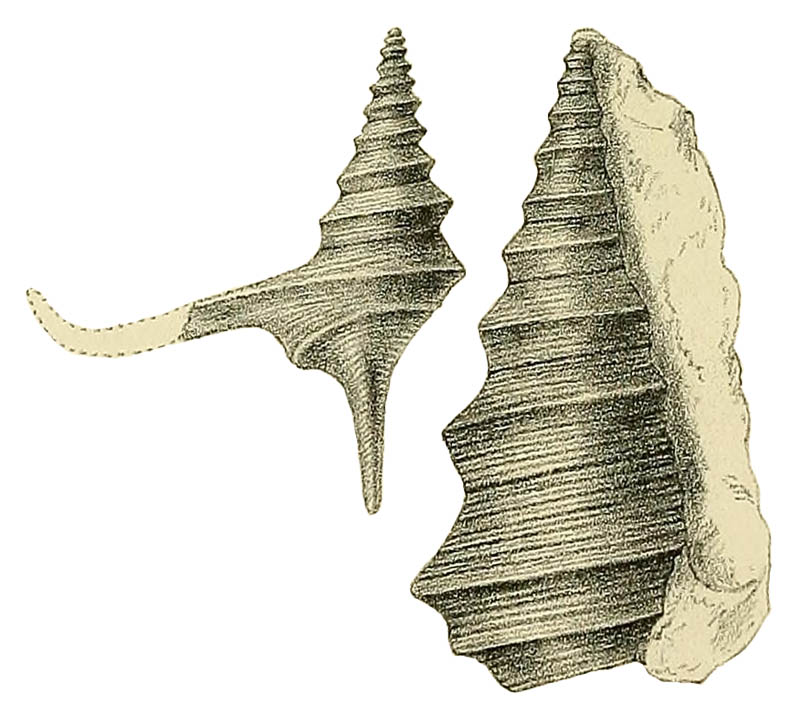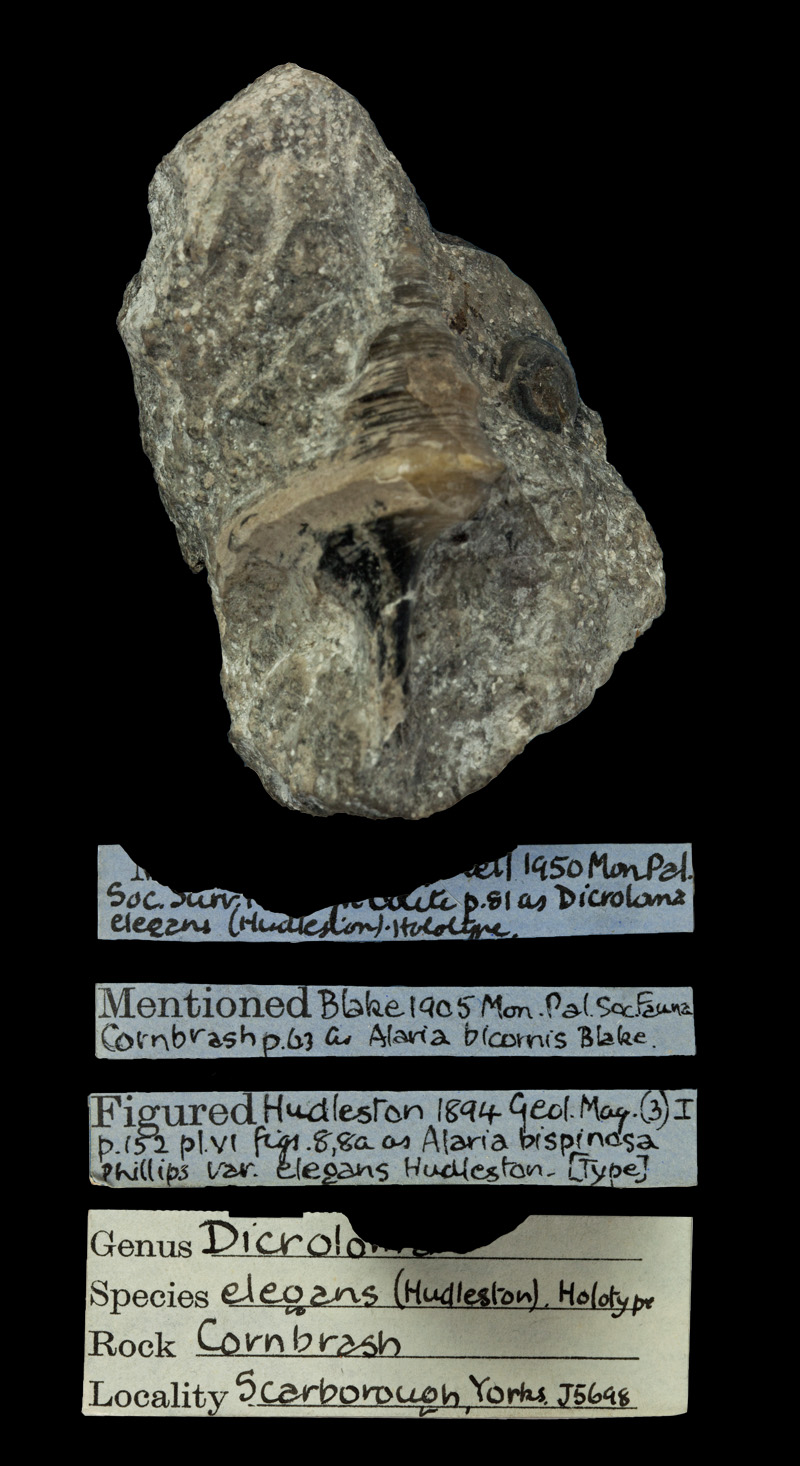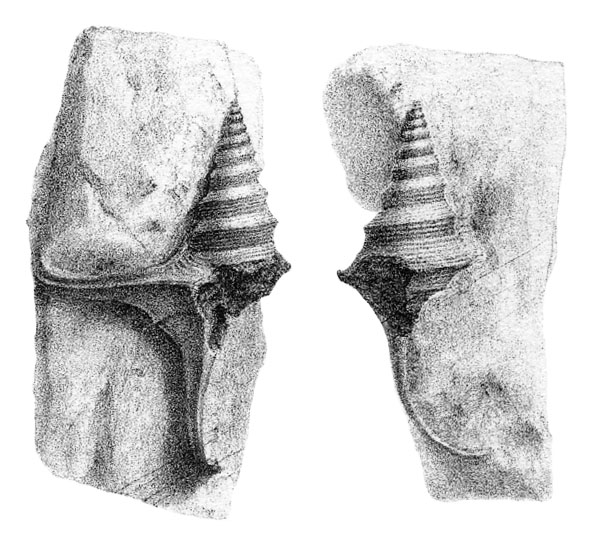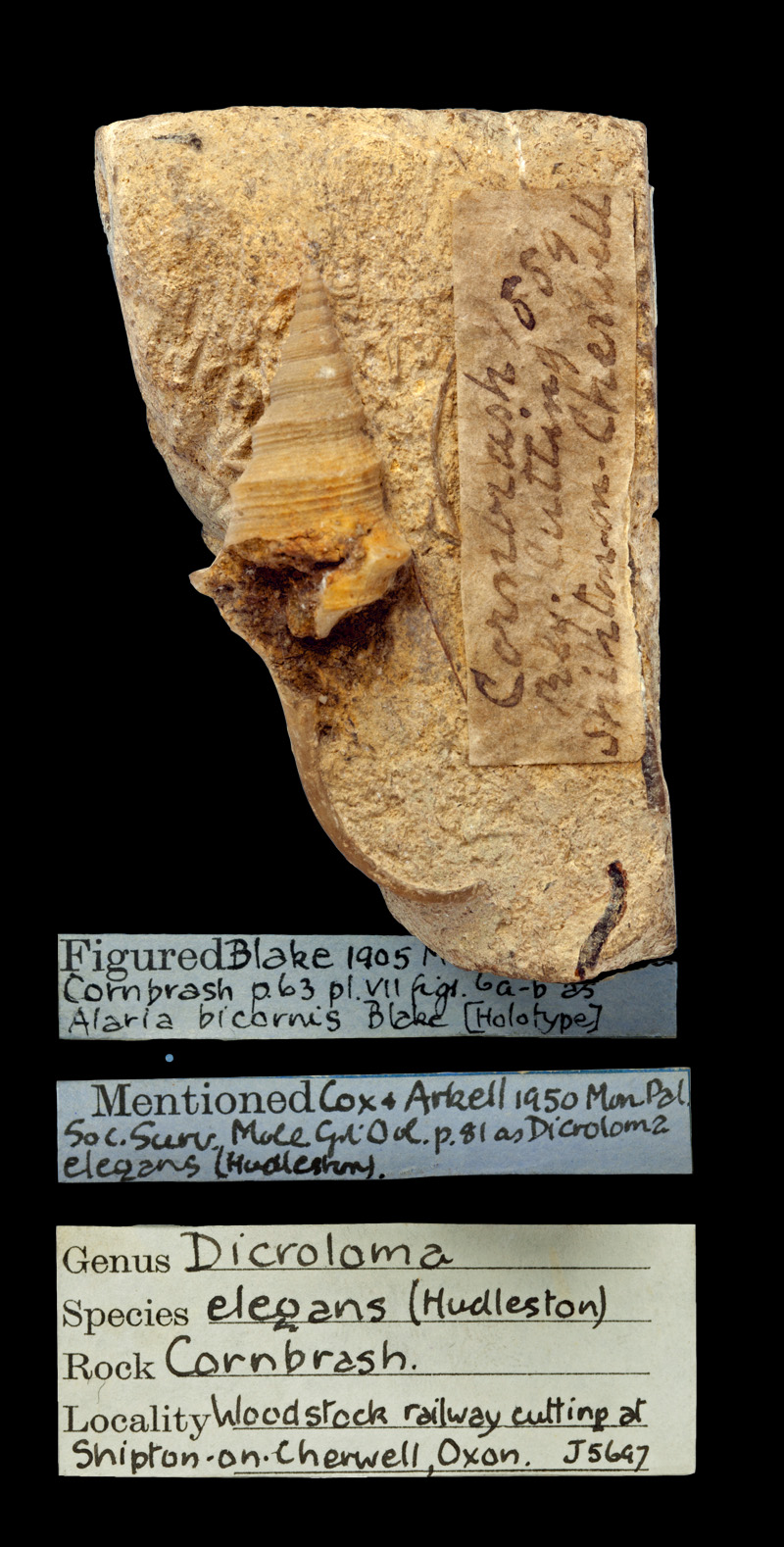|
edit SideBar
|
Species / Bicorempterus Elegans
Stromboidea
Original Description of Alaria bispinosa var. elegans by Hudleston, 1884, p. 152:
- "Shell turrited, somewhat elongate, the spire increasing with great regularity. The complete spire would consist of about 12 whorls, of which 7 are in good preservation. The earlier whorls are short, tumid, and scarcely angular; they are ornamented with spiral lines of great regilarity, one of which presently begins to develope as a keel rather below the middle of the whorls, which, in that part of spire immediately posterior to the body-whorl, become more angular, the upper half projecting outwards to meet the keel, whilst the lower half is slightly constricted. The spiral lines continue about the same in number, but increase in size with the increasing whorls. These keels are split by a very shallow spiral groove. Sutures close. The spiral lines in the anterior portion of the whorls are fewer and wider apart than those in the upper portion. A similar style of ornament pervades the body-whorl, where a very sharp and prominent upper carina occupying a median position is developed, and a very subordinate anterior one. This upper keel is prolonged in a very stout digitation, which is broken off. There is no trace of any digitation in connection with the anterior keel, which seems to die out towards the margin. The canal sheath, or tail, is broken off just where an apparent curvature is commencing: all this portion of the shell is ornamented with spiral lines, which are rather finer than those on the spire."
 Alaria bispinosa var. elegans Hudleston, 1884 pl. VI, fig. 8, 8a
Alaria bispinosa var. elegans Hudleston, 1884; Holotype; Cornbrash Rock Unit, Callovian – Bathonian, Jurassic; Scarborough, Yorkshire, England; Copyright Sedgwick Museum of Earth Sciences
History and Synonymy
1905
Original Description of Alaria bicornis by Blake, 1905, p. 63:
- 'Approximate spiral angle 32°. Shell turreted, somewhat elongate, the spire increasing with great regularity.' The spire as preserved consists of 10 whorls. 'The earlier whorls are short, tumid, and scarcely angular.' The first 3, in addition to spiral lines, have about 12 coarse longitudinal ribs which absolutely disappear in the later ones, and these 'are ornamented with spiral lines of great regularity, one of which presently begins to develop as a keel rather below the middle of the whorls, which in that part of the spire immediately posterior to the body whorl become more angular, the upper half projecting outwards to meet the keel, whilst the lower half is slightly constricted. The spiral lines continue about the same in number but increase in size with the increasing whorls. These keels are split by a very shallow spiral groove - sutures close. The spiral lines in the anterior portion of the whorls are fewer and wider apart than those in the upper portion. A similar style of ornament pervades the body whorl, where a very sharp and prominent upper carina occupying a median position is developed and a very subordinate anterior one. This upper keel is prolonged into a very stout digitation.' whose base extends backwards as far as the keel of the penultimate whorl, and forwards into a broad glacis; distally it is grooved on the posterior side and curved into a backward hook. 'There is no trace of any digitation in connection with the anterior keel,' which merely drives out slightly the margin of the wing. The canal sheath or most anterior digitation is at first nealry parallel to the axis of the shell, but soon forms a long curve in a plane perpendicular to that of the posterior digitation, and downwards when the latter is placed to the left. The upper part of 'this portion of the shell is ornamented with spiral lines, which are rather finer than those of the spire.'
- 'taken from Hudlestons description of Alaria bispinosa var. elegans'
Locus typicus: Woodstock Railway Cutting, Shipton-on-Cherwell, Oxfordshire County, South East Region, England
Stratum typicum: Sandy bed, "Cornbrash", upper Bathonian, middle Jurassic
Alaria bicornis Blake, 1905, pl. VII, fig. 6a, 6b
- Woodstock Railway Cutting, Shipton-on-Cherwell, Oxfordshire County, South East Region, England
Alaria bicornis Blake, 1905, Holotype; Cornbrash (sandy bed), Callovian – Bathonian, Jurassic; Woodstock Railway Cutting, Shipton-on-Cherwell, Oxfordshire County, South East Region, England; Copyright Sedgwick Museum of Earth Sciences
References
- Blake, 1905
- Cox, L.R. & Arkell, W.J. 1950. A survey of the mollusca of the British Great Oolite series Palaeontographical Society Monographs p.81
- Hudleston, 1884. I. Contributions to the Palaeontology of the Yorkshire Oolites. Geol. Mag., dec. iii, vol. i, p.145- 154, pl. vi, Vii Fulltext
- Woods, H. 1891. Catalogue of the Type Fossils in the Woodwardian Museum, Cambridge. Henry Woods with preface by T. McKenny Hughes CUP. 180+xiv SPL: II. 16 p.94
|




